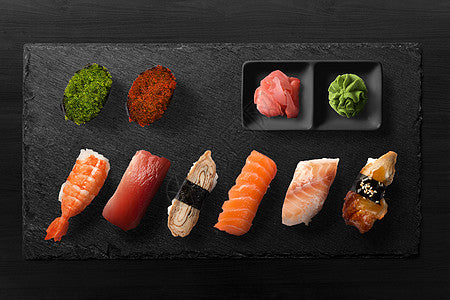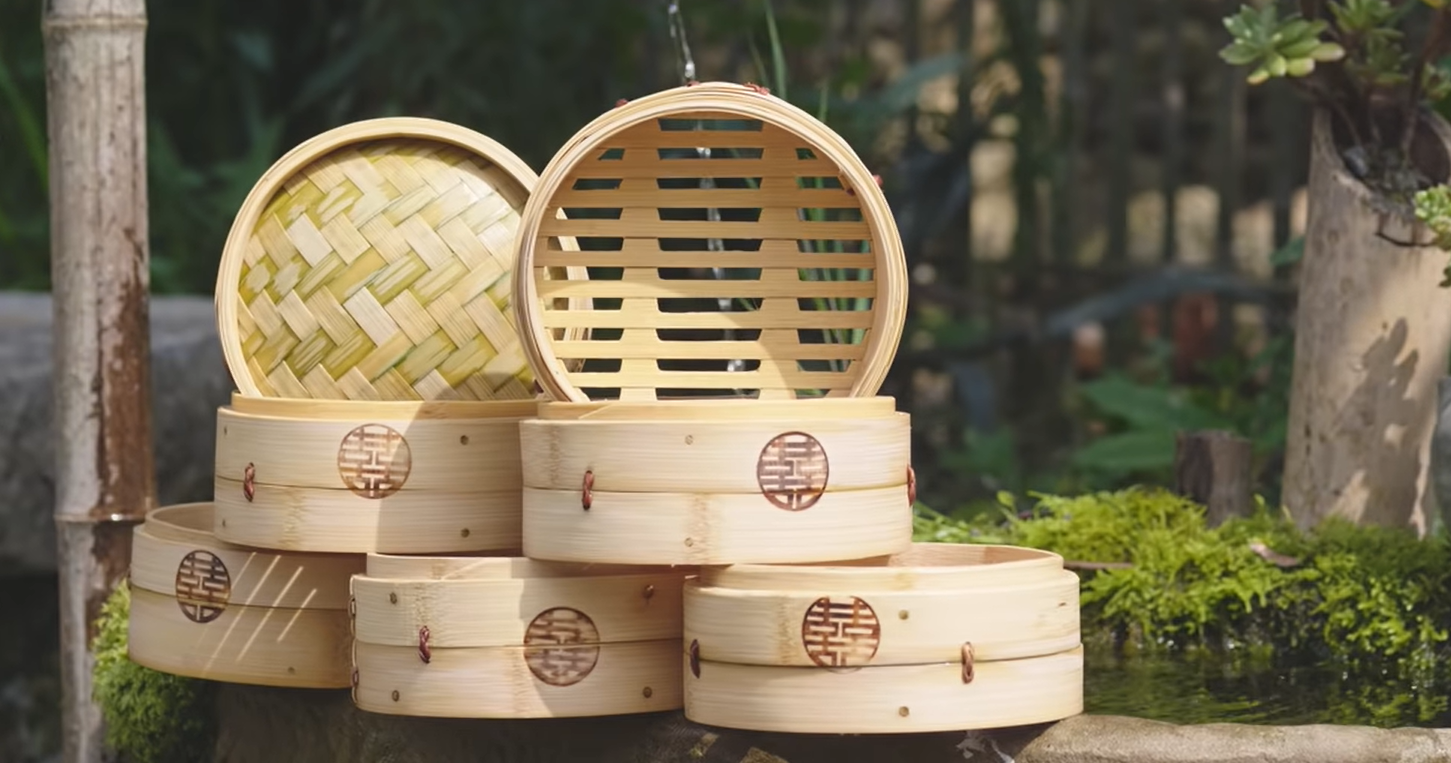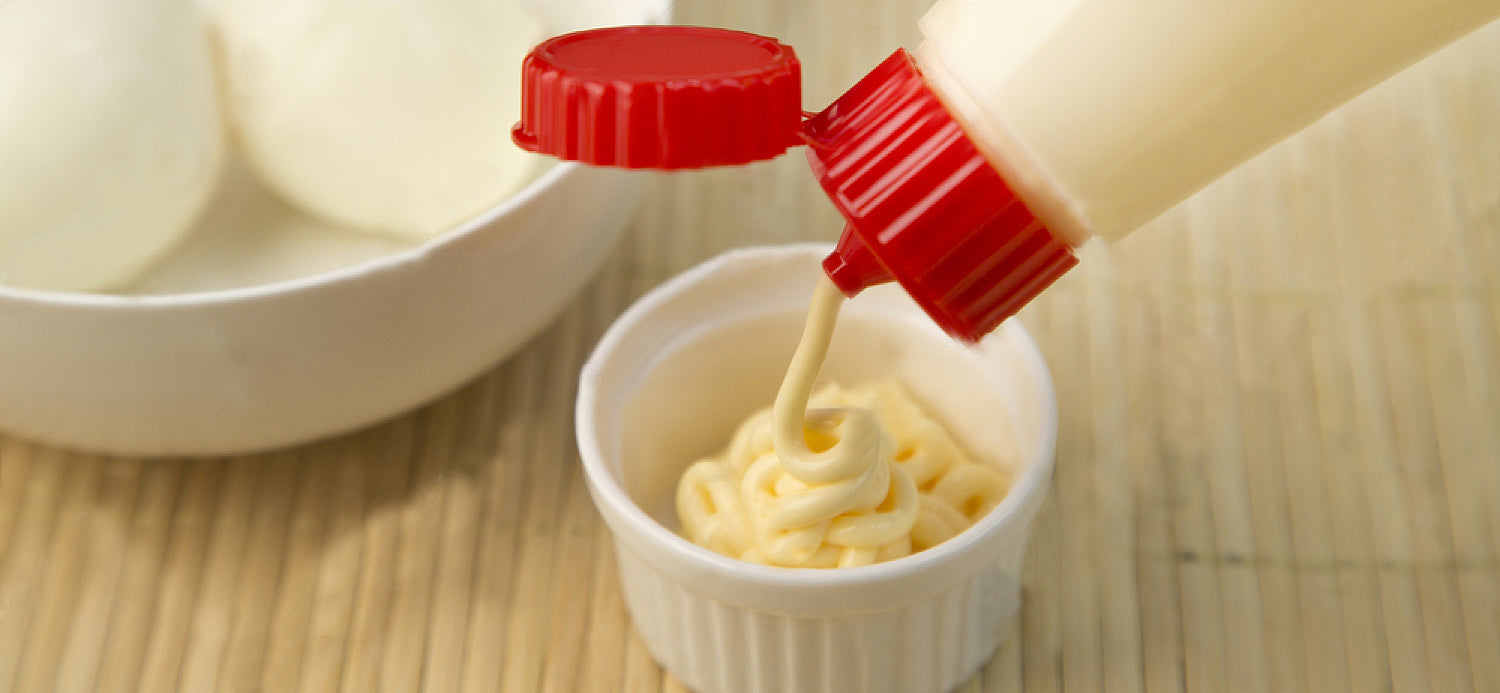What is sushi?
Sushi is the most famous Japanese dish outside of Japan, made from rice with other ingredients such as seafood, vegetables, or fresh fish.
And, although we associate "sushi" with raw fish, the reality is that rice is the most important ingredient in sushi.
With an origin of more than sixteen centuries ago, sushi is known worldwide and more and more people are encouraged to try this dish.
Ingredients and condiments.
Obviously rice . Sushi rice is medium grain, usually seasoned with rice vinegar and other seasonings such as salt and sugar.
The rice that is commonly used for sushi is japonica rice.
Nori seaweed is the vegetable covering that wraps makizushi or temaki . It is an edible seaweed, traditionally cultivated in Japan. Good quality nori is thick, smooth, shiny and has no gaps in the sheets. Nori sheets have great nutritional value. They contain protein, minerals, especially iodine, and are rich in vitamins A, B1, B2, B6, niacin ( it is a B vitamin that the body creates and uses to convert food into energy ) , and vitamin C.
The filling can be many things, raw fish, shellfish, vegetables, red meat, etc.
As mentioned above, the rice is flavored with rice vinegar . Vinegar is an essential seasoning for this dish. This vinegar is denser than normal vinegars, the color is a transparent-yellowish tone and it has a sweeter and milder flavor and aroma.
The use of vinegar to season rice has several reasons: since aesthetics are also important, this liquid maintains the white color of the rice; its flavor combines with that of fish; and thanks to its density it is ideal so that the rice does not lose consistency but has flavor.
Soy sauce or shōyu is always on the table to accompany sushi, although the flavor of the sushi may be camouflaged with the sauce, it is advisable to dip the sushi pieces a little in the sauce.
The gari or sliced ginger is taken between pieces to cleanse the flavor. It is basically sweet pickled ginger, it usually has a pink or yellowish white color.
We have all heard of wasabi at some point, and it is very common to find that spicy green paste next to the sushi pieces in restaurants that serve sushi. Although original wasabi is not served in most restaurants as it is too expensive, the taste is still very close to the original.
Wasabi has many beneficial elements for health, it helps prevent dental cavities, helps intestinal health by eliminating bacteria that are harmful to the body and has analgesic properties and has even been shown to have effects that act really well against cancer cells.
Although it is not recommended to take it in excessive amounts or very often, wasabi, as mentioned, has a large number of beneficial elements, so it is not bad to take it from time to time, of course, in small amounts.
Types of sushi.
1.Nigiri.
Nigiri is the most consumed piece of sushi in Japan. The rice is molded in an oval cylindrical shape, the rice should be very compact but at the same time a little loose so that it does not spoil when it is caught with chopsticks but it melts easily in the mouth. A sheet of raw fish is placed on top, the most common being salmon, tuna or shrimp.
If you are going to dip it in the soy sauce, try to dip the fish and not the rice as the liquid will cause the rice to melt and it will be difficult to catch with chopsticks later.
2.Maki.
Maki in Japanese literally means rolled or roll. This type of sushi has a wide variety of types.
It is usually wrapped in a layer of nori seaweed (maki), inside rice and accessories; when it has several ingredients inside it is maki, on the other hand when it has only one ingredient it is called Hosomaki and is eaten in one bite. Many other times, rice can be used instead of nori seaweed (uramaki).
3.Sashimi.
This dish does not have rice, that is, it is basically raw fish. The fish is always usually cut cautiously, for aesthetics.
4.Temaki
The nori seaweed is shaped into a cone and filled with rice and accessories.
Precautions at home.
When preparing sushi at home, be aware of anisakis in raw fish. If the fish is cooked, there is no problem considering that the cooking temperature exceeds 60 degrees, although it is recommended that it reaches 70. On the other hand, if the fish is raw, it is recommended to freeze it for about 72 hours before using it to prevent contagion. of anisakis.
History.
Most people believe that this dish originated in Japan, but the truth is that it is said to have originated in China between the 3rd century and the 5th century as a method of preserving fish in salt, then it came to Japan in the 15th century. VII.
Food preservation was based on keeping food in salt and letting it ferment with rice. The fish, when it was clean, was covered with rice so that the natural fermentation process collaborated in its conservation.
When this preservation method spread to Japan, the people chose to eat the rice together with the fish even when it was half raw, it became a popular way of preparing food instead of a method of preserving food.
Later, a doctor decided to add vinegar to the rice.
The first appearance of the word "sushi" was in the Yoro Code, written in the year 718.
Over the centuries, this dish has slowly changed. By the middle of the 18th century, sushi spread to Edo (the name Tokyo received before the Meiji Restoration in 1868) where sushi restaurants were opened. A journalist in 1852 said that for every 100 m2 there were one or two sushi restaurants.
After World War II, sushi began to be served in restaurants and was considered a luxury dish.
This method of elaboration turned sushi into a fast, light and nutritious food, which motivated its definitive expansion. The consumption of sushi was crossing borders to become a benchmark in world cuisine.
How to evolve towards the top gourmet?
Sushi, this should be the Japanese food that we are most familiar with. Its composition is so simple that in the eyes of some people, sushi is just a simple combination of a strand of rice with fish, shrimp and shellfish. However, due to this, sushi can perfectly display the original flavor of various ingredients.
From a historical point of view, eating sushi is not about appreciating art, but simple and fast civilian cuisine, some ancient sushi, such as cooked sushi, are even called dark cuisine. How did sushi evolve from obscure cuisine to the best cuisine in the world?
Sushi has been a civilian diet for a long time, and only in recent years have high-end restaurants appeared. The most famous is, naturally, "God of Sushi" Ono Jiro's "Sukiyabashi Jiro". And Jiro Ono's restaurant also specializes in nigiri sushi. There are so many types of sushi. Why has only nigiri sushi become a top delicacy?
The most fundamental reason is the ingredients. When Hanaya and Heei invented nigiri sushi, they emphasized the seasons and used fresh sashimi from Tokyo Bay every day. In recent years, with the continuous improvement of fishing technology, refrigeration technology and transportation capacity, the selection of nigiri sushi has been greatly expanded, laying the foundation for it to become a high-end gourmet. spectrum.
In addition to the ingredients, the chef factor is also very important. For example, "Jiro" is world famous not only for Ono Jiro's grasping skills and pickiness with ingredients, but more importantly, for his precise understanding of sushi's soft and hard texture and meticulous feel at the moment. of the entrance. . As Jiro Ono said at the beginning of the documentary "The God of Sushi":
"Once you decide on your career, you must dedicate yourself to work, you must love your work, never complain, you must spend your life perfecting your skills, this is the secret of success and the key to respect."
This is the key to making nigiri sushi like "Jiro" a first class cuisine.






Leave a comment
All comments are moderated before being published.
This site is protected by hCaptcha and the hCaptcha Privacy Policy and Terms of Service apply.